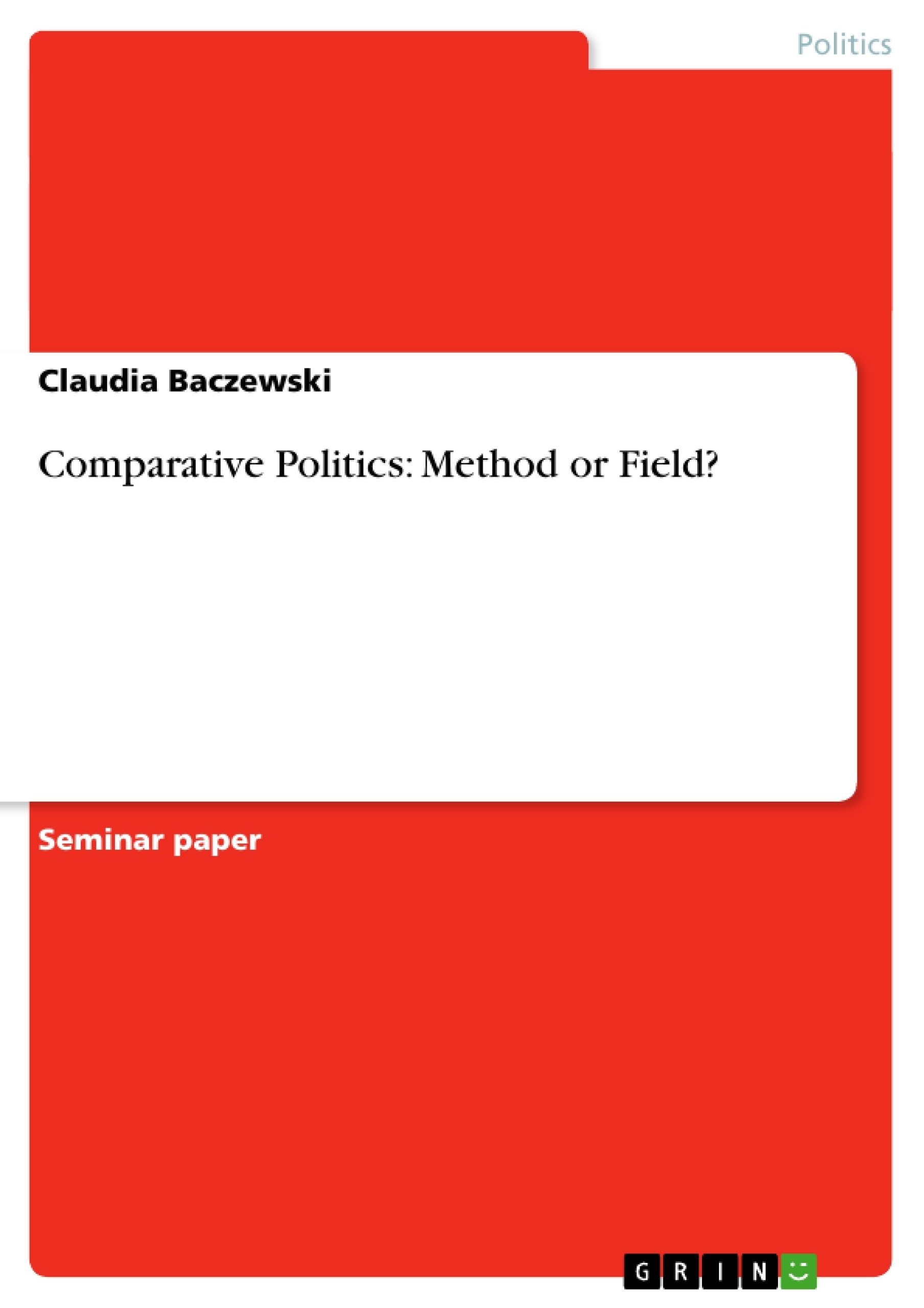“Comparativists want to understand the critical events of the day, a position that ensures that dreams of theory address the political world as it exists, not formal abstractions or utopias.” (Lichbach/Zuckerman 1997: 3-4)
These are ambitious goals of comparativists. The aim of this paper is to further expose the goals and the methods of the field of comparative politics. In order to do so, one has to define “field” to begin with and then go on with defining the subfield of political science. What is comparative politics, how did the field emerge and what are its methods? These are questions to be answered by this paper.
Inhaltsverzeichnis (Table of Contents)
- Introduction
- What is comparative politics and what are its goals?
- How did the field emerge?
- What are the methods of the field?
- Rational choice theory
- Culturalist approach
- Structural analysis
- Case studies - an important tool.
- Conclusion
Zielsetzung und Themenschwerpunkte (Objectives and Key Themes)
This paper explores the goals and methods of the field of comparative politics, aiming to define both the "field" in general and the specific subfield within political science. It examines how comparative politics emerged and delves into the methodologies employed within the discipline.
- Defining "field" and its application to political science
- Understanding the goals of comparative politics, particularly its emphasis on explanation and generalization of theories
- Exploring the emergence of comparative politics as a response to post-World War II political challenges
- Examining the diverse methods utilized in comparative politics, including rational choice theory, culturalist approaches, and structural analysis
- Highlighting the importance of case studies as a tool within the field
Zusammenfassung der Kapitel (Chapter Summaries)
The introduction sets the stage by outlining the ambitions of comparative politics, focusing on its desire to understand and explain the political world as it exists. This paper aims to further unpack these goals and methods.
The second chapter delves into the definition of a field within political science, highlighting comparative politics as a unique subfield that does not directly define its subjects of study. However, it identifies dominant themes within the field, such as democratization, regime changes, and electoral systems.
The third chapter explores the inherent goal of comparative politics: to explain and generalize theories derived from the method of comparison. This chapter defines "method" as the organized approach to complete a task or achieve a specific objective. It emphasizes the connection between the discipline of political science and its subfield, comparative politics, both striving to explain political phenomena through understanding and theoretical grounding.
The fourth chapter focuses on the distinctive methods employed by comparative politics, particularly the use of comparisons. It acknowledges the existence of three theoretical schools within the field: rational choice theory, culturalist approaches, and structural analysis. This chapter briefly introduces each school, emphasizing the underlying assumptions and approaches associated with each.
Schlüsselwörter (Keywords)
Comparative politics, political science, methodology, explanation, generalization, theory-building, case studies, rational choice theory, culturalist approaches, structural analysis, post-World War II challenges.
- Quote paper
- Claudia Baczewski (Author), 2005, Comparative Politics: Method or Field?, Munich, GRIN Verlag, https://www.grin.com/document/63375



